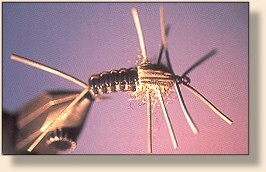This pattern catches the silhouette of the natural. The Antron
thorax catches and carries air bubbles like the gill tufts on the
natural. The rubber leg material give it some lifelike movement
as it tumbles around in the currents. The Larva Lace woven-body gives
it a sheen and segmentation that is attractive.
Tying Instructions:
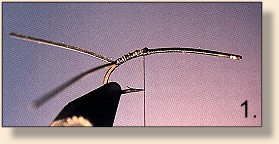
1. Tie in a tail of black rubber leg material. This is easily
done by cutting a two-inch piece and folding it in half. Bind
the doubled-up part on top of the hook shank, near the bend of
the hook. Maneuver it into position, forming a split tail.
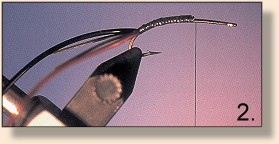
2. Tie in an eight-inch piece of black Larva Lace on the far
side of the shank. Tie this down to where the tail begins. Tie in
a piec of orange Larva Lace on the near side of the shank, and tie
it down to where the tail begins.
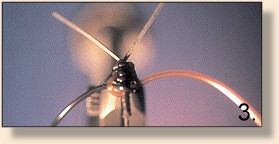
3. Turn the vise toward you and begin to perform the
overhand weaving technique found above. Weave the body
to slightly forward of the middle of the shank.
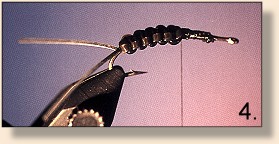
4. Pull both colors of the Larva Lace forward, bind the
down and trim excess.
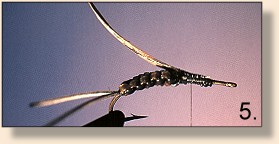
5. Tie in a lacquered pheasant rump feather where the body
ends. Tie this in with the dull side facing up. This
will be used to form the wingcase.

6. Tie in two pieces of black rubber leg material to form the
legs, one on each side of the shank.
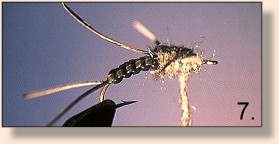
7. Dub a thick thorax. Wind the dubbing behind, between, and in
front of the rubber legs. Be sure to leave a little room behind
the eye of the hook.
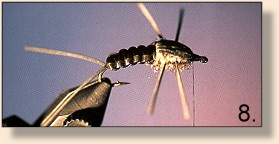
8. Pull the pheasant feather forward over the dubbing to form
the wingcase. Tie this down behind the eye of the hook. Clip
off excess.
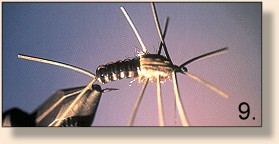
9. Tie in two more pieces of black rubber leg material, one on
each side of the hook. This will make the last set of legs
and antennae.
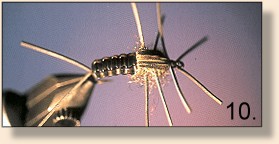
10. Whip finish. Trim the legs, tails and antennae to size.
Pick out the dubbing and trim it, if necessary, to give it a
buggy look. Completed Dark Stone Nymph.
~ Robert Williamson
Credits: The Dark Stone Nymph is one of the many excellent
instructional flies presented in Robert Williamson's book,
Creative Flies - Innovative Tying Techniques, published by
Frank Amato Publications.

